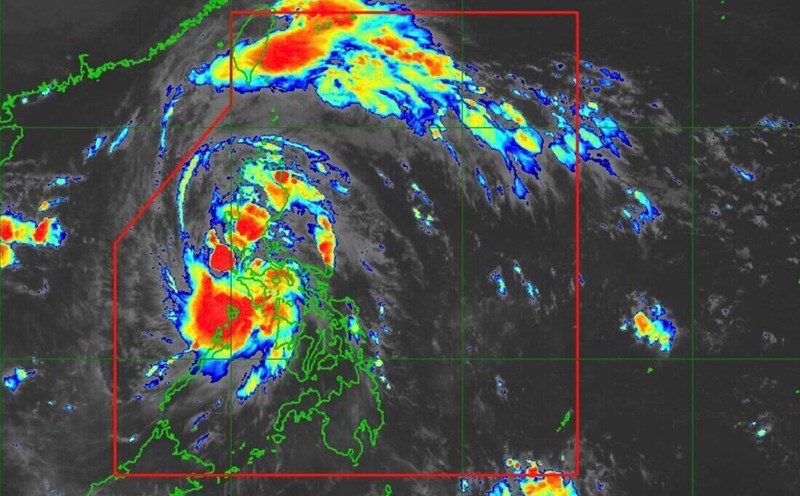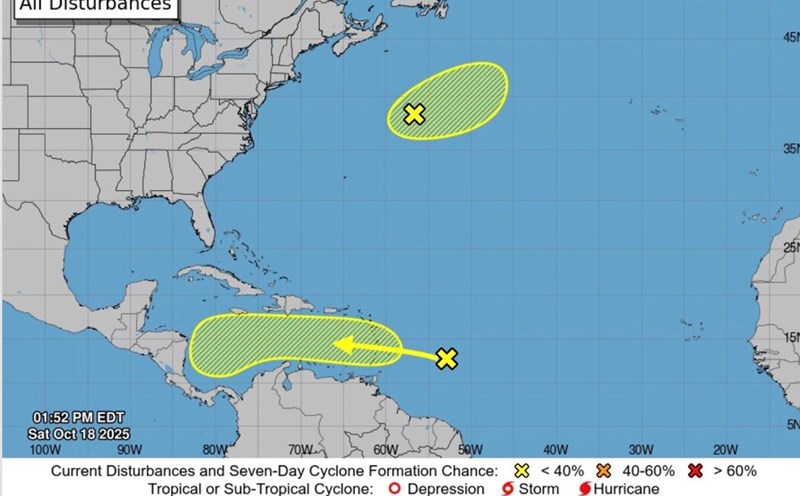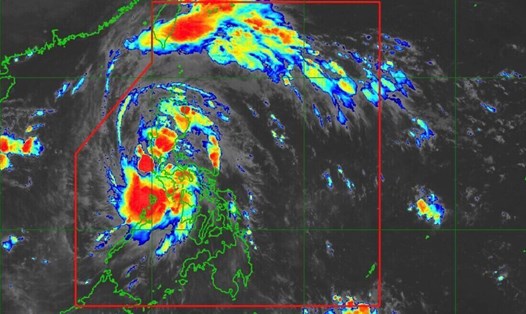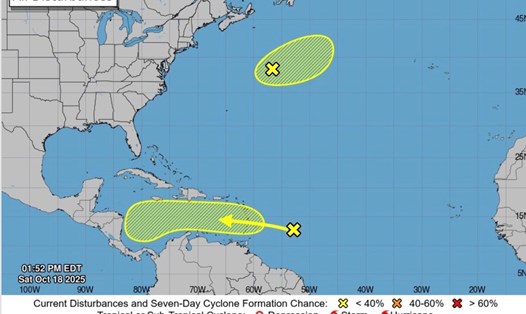The latest storm information from the Philippine Atmospheric, Geophysical and Astronomical Services Administration (PAGASA) said that tropical storm Fengshen made its third landfall in Mauban, Quezon, at 7:30 a.m. on Sunday, October 19.
As of 10 a.m., the eye of Typhoon Fengshen was in Manila Bay, moving west-northwest at 15 km/h. The storm's maximum sustained winds are 65 km/h, gusting up to 90 km/h.
From Manila Bay, Typhoon Fengshen is forecast to pass through Central Luzon. The storm is then likely to enter the coastal waters of Zambales or Pangasinan on the afternoon of October 19.
Warning of widespread heavy rain and strong winds
PAGASA has issued a warning of heavy rains from Typhoon Fengshen that could last in the capital Manila and more than 30 provinces in the next 24 hours.
The authorities have also issued widespread storm warning signals. Typhoon No. 2 - equivalent to level 8 - 9, gusting to level 10 - has been applied to the provinces of Pangasinan, Aurora, Nueva Ecija, tarlac, Pampanga, Zambales and part of the capital Manila. Typhoon No. 1 - equivalent to level 6 - 7, gusting to level 8 - was issued for many other areas, including Cagayan, Isabela, Cavite, Batangas and the rest of the capital Manila.
Risk of rising water due to storms and rough seas
In addition to heavy rains and strong winds, there is a risk of storm surge with an altitude of 1 - 2m in coastal areas of Aurora, Quezon, Pangasinan, Zambales, Bataan, Batangas, and some other areas.
The situation at sea is also very dangerous. In the waters of Isabela, Aurora, Zambales, waves can reach up to 4.5m, endangering all types of vessels. Many other coastal areas have waves 2 - 3.5m high, and small ships are advised not to go to sea.
Typhoon No. 12 Fengshen is forecast to leave the Philippines on the morning of October 20. After leaving the Philippines, the storm is likely to strengthen into a severe tropical storm.
This is the 18th tropical storm to hit the Philippines in 2025 and the 3rd in October. PAGASA also noted that the Philippines is in the transition period to the northeast monsoon and the La Nina phenomenon is occurring, which means the country may see above-normal rainfall in the coming months.











